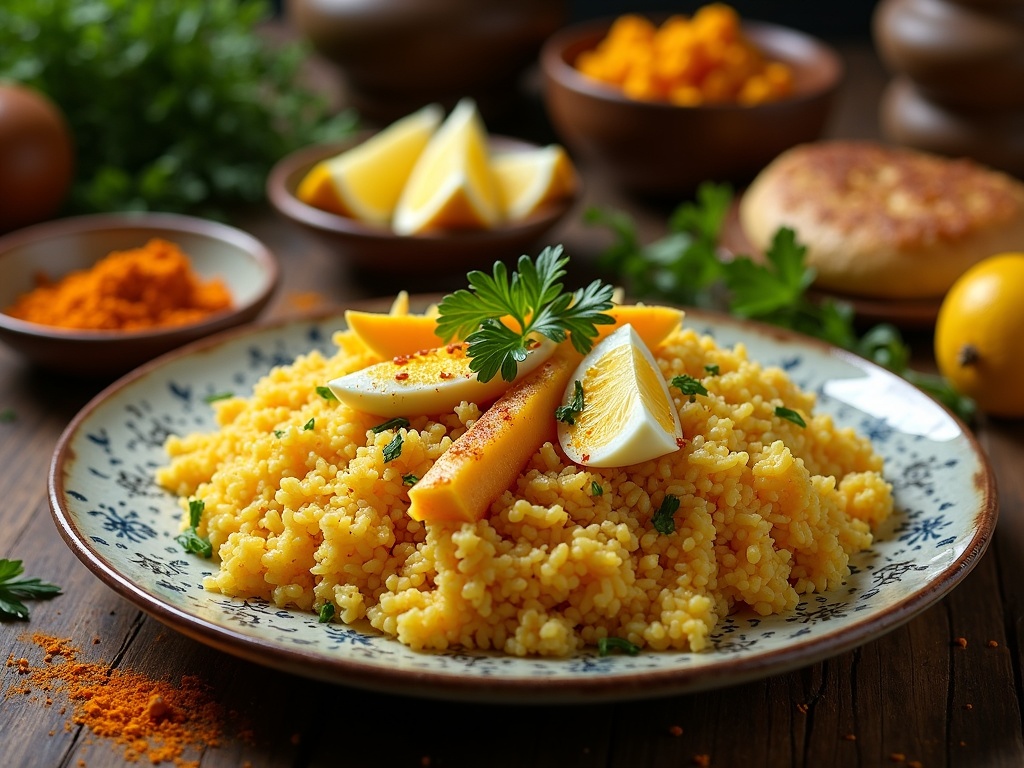Kedgeree showcases a culinary fusion that developed from Indian kitchari during British colonial rule. The British transformed this dish by adding smoked fish and eggs, creating a distinct Anglo-Indian creation. Today, this historic recipe appears on modern brunch menus across the world, gaining popularity as diners embrace international breakfast options that highlight cultural exchange.
Find In This Article
Key Takeaways
- Kedgeree originated from the Indian kitchari (rice and lentils) but was transformed by British colonials who added smoked haddock and eggs.
- The dish maintains its Indian roots through spiced rice while incorporating distinctly British elements like smoked fish.
- Modern variations include healthier alternatives with quinoa, vegetarian options with smoked tofu, and coconut milk versions for added creaminess.
- Nutritionally balanced, kedgeree provides approximately 420 calories per serving with beneficial omega-3 fatty acids, vitamin B12, and iron.
- Kedgeree has evolved from colonial origins to become a beloved staple in British cuisine, featured prominently in upscale hotels and trendy brunch spots.
A Beloved British-Indian Fusion Dish
Kedgeree stands as one of the most interesting examples of culinary exchange between cultures. This delightful dish originated from the Indian kitchari, a humble combination of rice and lentils that formed a staple in many Indian households. During the British colonial period, this simple dish caught the attention of British officers stationed in India who were drawn to its comforting qualities.
These officers didn’t simply adopt kitchari as it was—they transformed it according to their tastes. By adding smoked fish (typically haddock) and hard-boiled eggs, they created something entirely new that would eventually become a breakfast staple back in Britain. The addition of these protein elements gave the dish more substance while maintaining its comforting rice base.
Modern Revival and Cultural Significance
The popularity of kedgeree hasn’t waned over time. In fact, it’s experiencing quite a renaissance on modern brunch menus across the UK and beyond. This revival isn’t surprising given that 42% of consumers showed interest in trying international breakfast dishes in 2021, indicating a growing appetite for cross-cultural morning meals.
What makes kedgeree so special is how it represents a true fusion of culinary traditions:
- The spiced rice foundation remains true to its Indian roots
- The smoked fish adds a distinctly British element
- The eggs provide richness that bridges both culinary traditions
- The flexible nature allows for contemporary adaptations
Today, kedgeree serves as more than just a tasty fish and rice dish—it’s a symbol of Anglo-Indian culinary fusion that tells the story of historical connections between two cultures. The dish demonstrates how eggs can transform traditional recipes when combined with unexpected ingredients.
Many chefs now offer their own interpretations, sometimes using luxury fish varieties or adding modern touches while keeping the essential character intact. Some variations even draw parallels to other rice-based dishes like creamy chicken risotto or savory upma, showing how culinary traditions often share common techniques across cultures.
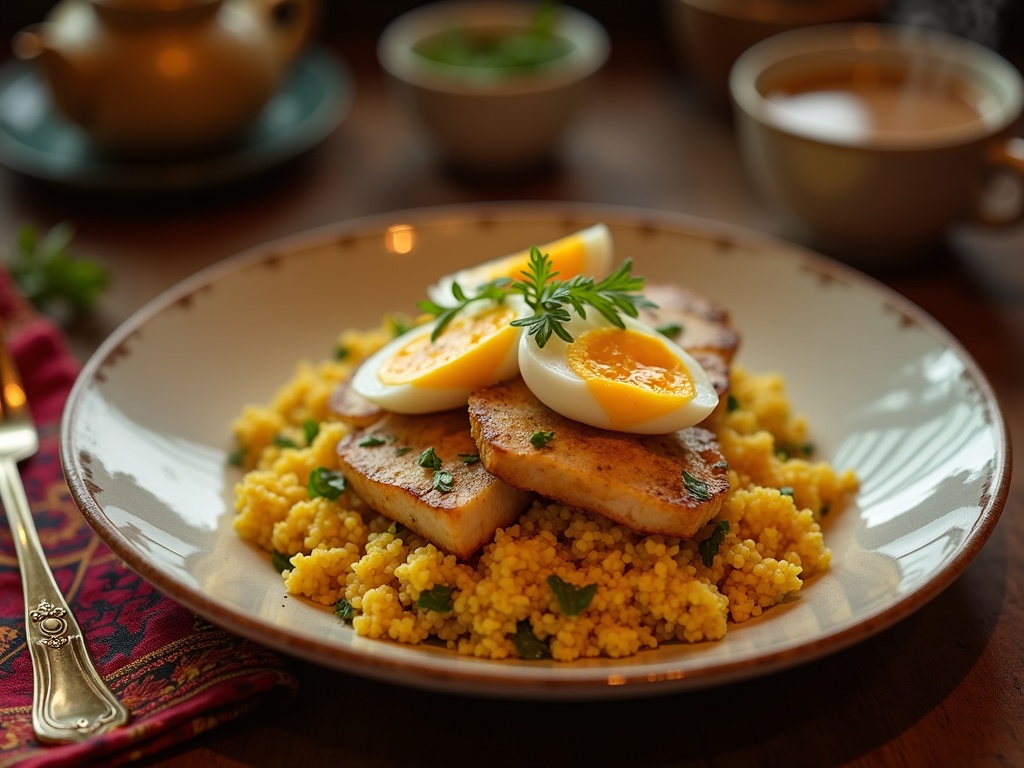
Traditional Recipe and Modern Variations
I’ve found that kedgeree occupies a special place in the culinary world, bridging British colonial history with Indian flavors. This hearty dish combines the richness of smoked fish with aromatic rice and eggs to create something truly satisfying.
Classic Kedgeree Components
The traditional kedgeree recipe relies on a handful of key ingredients that create its distinctive character. At its heart lies smoked haddock, which provides a robust flavor foundation that carries throughout the dish. I pair this with basmati rice for its fragrant aroma and fluffy texture when cooked properly. Hard-boiled eggs add protein and visual appeal, while fresh herbs like parsley or coriander bring brightness to balance the rich components.
The spice profile is what truly sets kedgeree apart from other fish and rice dishes you might encounter. Curry powder delivers that characteristic warmth and color, while black pepper adds necessary heat. Many recipes also incorporate subtle notes of nutmeg or cardamom to enhance the aromatic quality. I’ve discovered that toasting these spices before adding other ingredients significantly amplifies their flavors.
Modern Interpretations
Today’s kedgeree has evolved considerably from its Anglo-Indian origins. Contemporary chefs have reimagined this classic by substituting traditional ingredients with modern alternatives. Smoked salmon often replaces haddock for a lighter flavor profile and more delicate texture. For those seeking healthier options, nutrient-dense quinoa frequently stands in for white rice, creating a protein-packed alternative to the traditional risotto-like consistency.
The vegetarian kedgeree movement has gained significant traction, with creative substitutions like smoked tofu or roasted mushrooms mimicking the umami qualities of fish. These plant-based versions often incorporate curried eggs as a protein source while maintaining the dish’s characteristic spice profile.
This evolution reflects broader dining trends, with research showing that 55% of young adults prefer innovative takes on traditional dishes. This demographic appreciates connections to culinary heritage while expecting fresh interpretations that align with contemporary tastes and dietary preferences.
Popular variations have taken kedgeree in fascinating new directions:
- Coconut milk versions that add creaminess and tropical notes
- Fusion interpretations incorporating sriracha or other global condiments
- Breakfast bowls featuring poached rather than hard-boiled eggs
- Grain-free adaptations using cauliflower rice for low-carb diets
- Indo-Chinese variations with soy sauce and ginger
The coconut-infused version has particular appeal, creating a dish that sits somewhere between kedgeree and a savory breakfast porridge with distinctly South Asian overtones. This adaptation pairs beautifully with lime and fresh chili to cut through the richness.
I’ve noticed that modern kedgeree often appears on brunch menus rather than at dinner tables, showing how this versatile dish has found a new place in contemporary dining. The combination of protein, carbohydrates, and vibrant flavors makes it ideal for a satisfying mid-morning meal that carries the same comfort-food appeal as its British-Indian fusion cousins like coronation chicken.
Whether adhering to tradition or embracing innovation, kedgeree remains a testament to the beautiful culinary exchange between cultures that continues to evolve and delight palates today.
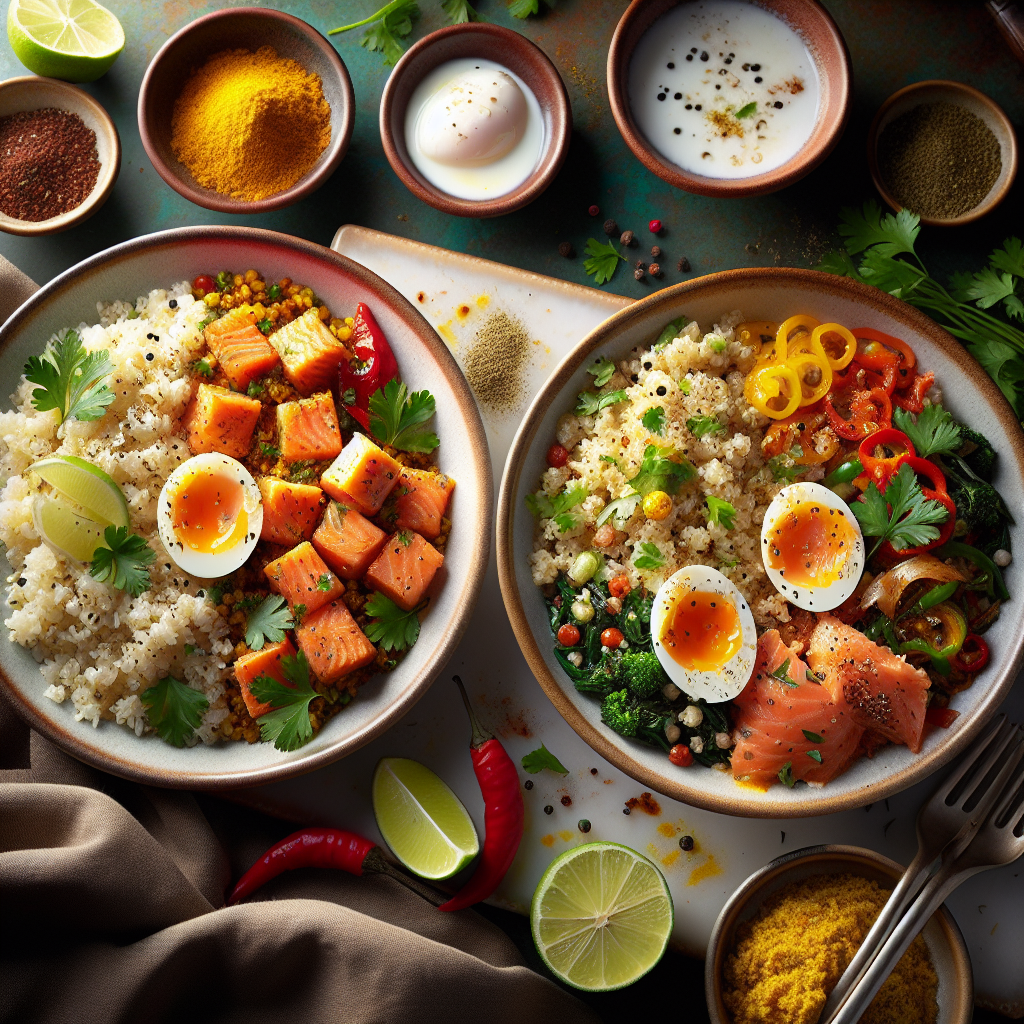
Nutritional Benefits and Dietary Considerations
Kedgeree delivers an impressive nutritional profile while satisfying your taste buds. A standard 300g serving provides approximately 420 calories with a balanced macronutrient distribution of 25g protein, 50g carbohydrates, and 15g fat. The 3g of dietary fiber helps support digestive health, making it a well-rounded meal option.
Protein and Essential Nutrients
The smoked fish in kedgeree, particularly haddock in curry-based recipes, contributes significantly to its nutritional value. A 150g portion of smoked haddock alone contains approximately 230 calories and serves as an excellent protein source. This protein content supports muscle maintenance and repair, keeping you satisfied longer.
Beyond protein, kedgeree offers impressive micronutrient benefits:
- Omega-3 fatty acids from smoked fish support heart and brain health
- Vitamin B12 contributes to red blood cell formation and neurological function
- Iron helps transport oxygen throughout the body and prevents fatigue
- Eggs add additional protein and essential vitamins like vitamin D
The combination of fish and eggs in this curried dish creates a nutritional powerhouse that’s difficult to match with simpler meals. The spices used in kedgeree also contain antioxidant properties, potentially offering additional health benefits.
Dietary Adaptations
I’ve found kedgeree can be easily modified to accommodate various dietary needs without sacrificing its essential character. For those following gluten-free diets, the dish is naturally compliant when prepared with traditional ingredients. Just ensure any stock cubes or flavorings added are certified gluten-free.
Vegetarian adaptations can be equally delicious by:
- Substituting smoked fish with smoked tofu or tempeh
- Adding more eggs for protein content
- Incorporating additional vegetables like peas, spinach, or mushrooms
- Using vegetable stock instead of fish stock
- Adding chickpeas or lentils for texture and protein
For those monitoring calorie intake, I can reduce the fat content by using less butter and choosing low-fat milk or yogurt for creaminess. The rice preparation similar to risotto can be adjusted by using brown rice instead of white for additional fiber and nutrients.
For a lighter version with similar flavors but fewer carbohydrates, cauliflower rice makes an excellent substitute for traditional rice. This modification reduces the dish to approximately 300 calories per serving while maintaining the protein content.
Those looking to boost the dish’s nutritional profile can add leafy greens or grain-based sides to increase fiber content. The versatility of kedgeree makes it an ideal canvas for nutritional customization while preserving its signature flavors.
The fusion of Indian spices with British ingredients creates a dish that’s not only culturally significant but nutritionally valuable. Whether enjoyed as a hearty breakfast or satisfying dinner, kedgeree offers substantial nutritional benefits while remaining adaptable to modern dietary preferences and restrictions.
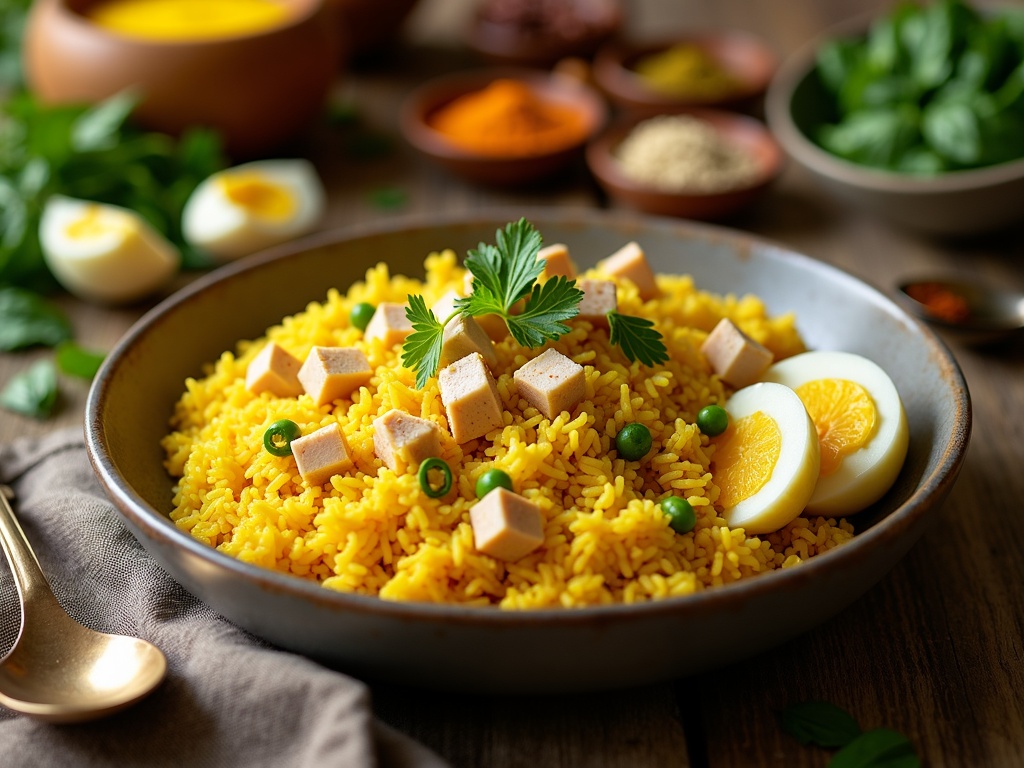
Cultural Impact and Modern Popularity
Kedgeree has carved a significant place in British culinary traditions, with approximately 65% of British people having tried this flavorful dish at least once. This impressive statistic speaks to its widespread acceptance and popularity across the United Kingdom.
From Colonial Roots to Modern Tables
I’ve noticed kedgeree has evolved from its colonial origins to become a beloved staple of British breakfast and brunch culture. The dish perfectly exemplifies the lasting culinary exchange between British and Indian cooking traditions. Its journey from an Indian khichdi to a British breakfast classic demonstrates how food transcends borders and adapts to new cultural contexts.
The fascinating blend of flaky fish with aromatic spices represents more than just a tasty meal—it’s a living piece of history on a plate. The combination of rice, fish, eggs, and curry flavors tells the story of British colonial presence in India and the subsequent cultural fusion that continues to influence modern British cuisine.
When visiting upscale hotels or trendy brunch spots across Britain, you’ll likely find kedgeree featured prominently on gourmet breakfast menus. Chefs have embraced this traditional dish, often adding contemporary twists while maintaining its essential character. Some modern interpretations include:
- Smoked haddock varieties with a hint of luxury through the addition of saffron
- Vegetarian adaptations using curried eggs as the centerpiece
- Lighter versions with brown rice and extra vegetables for health-conscious diners
- Elegant presentations that elevate the dish from humble origins to fine dining status
The enduring popularity of kedgeree speaks to its versatility and satisfying nature. It bridges the gap between comfort food and sophisticated cuisine, making it appropriate for both casual family breakfasts and special occasion brunches. Its ability to transform simple ingredients into something greater than the sum of its parts mirrors the technique seen in classic risotto, though with distinctly different flavor profiles.
What makes kedgeree particularly fascinating is how it demonstrates the lasting influence of British-Indian cultural exchange. Unlike many colonial-era adaptations that have faded into obscurity, kedgeree has maintained its relevance and continues to evolve. Contemporary British food writers and chefs often celebrate it as part of Britain’s multicultural culinary heritage rather than viewing it as a relic of the past.
The dish shares similarities with other cross-cultural creations like coronation chicken, which also combines British and Indian flavors. These dishes represent how culinary traditions blend and transform over time, creating new classics that honor multiple cultural influences.
Today’s home cooks frequently prepare kedgeree as a way to use leftover fish from previous meals, making it not only delicious but practical. This practical aspect, combined with its rich flavors and satisfying texture, ensures kedgeree remains relevant in contemporary cooking.
The dish’s popularity extends beyond traditional British households. With the rising interest in global cuisines and fusion cooking, kedgeree serves as an accessible entry point to exploring Indian flavors in a familiar format. Its similarity to other grain-based dishes like upma provides culinary connections that food enthusiasts can explore further.
As breakfast and brunch continue to grow as social dining occasions, kedgeree’s place on these menus seems secure for generations to come. Its rich history, adaptability, and distinctive flavor profile ensure this Anglo-Indian creation will remain a valued part of Britain’s culinary landscape.
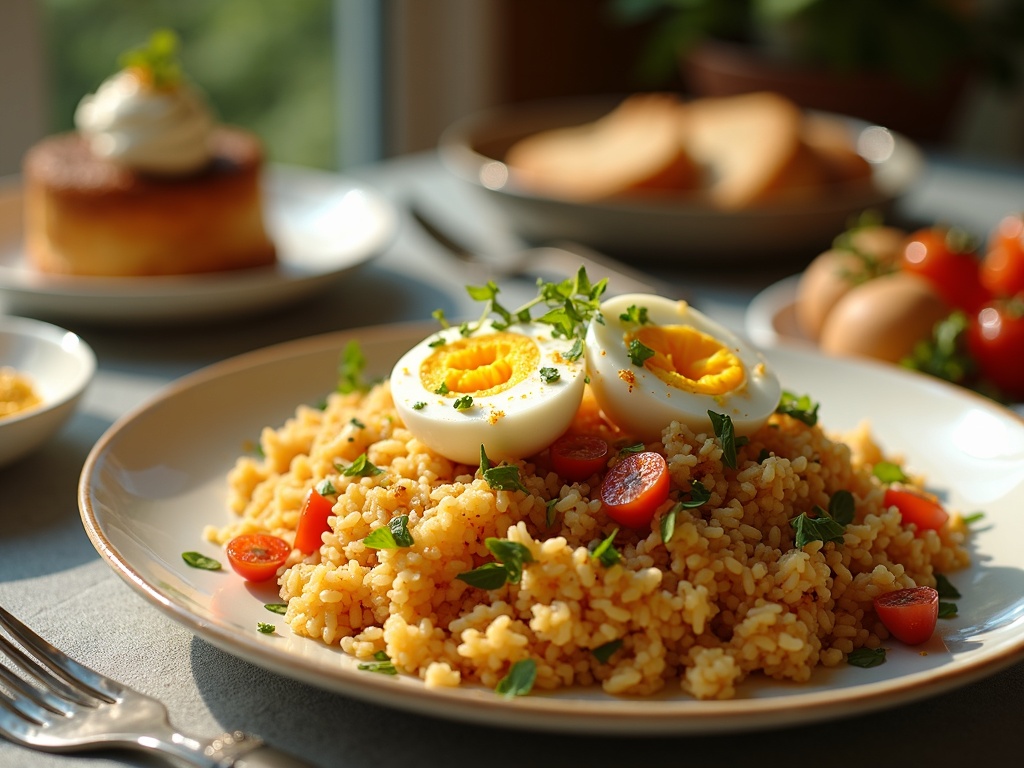
Making Your Perfect Kedgeree
Kedgeree is one of those brilliant dishes that combines simplicity with bold flavors. I’ve found that making this Anglo-Indian classic at home gives you complete control over the balance of spices and textures. The key lies in preparing each component correctly before bringing them together.
Essential Preparation Steps
First, I start by poaching smoked haddock in milk or gently steaming it until it flakes easily with a fork. This method helps preserve the delicate flavor while ensuring the fish remains moist. The fish should be just cooked through – typically taking about 8-10 minutes depending on thickness. Once done, I remove any skin and bones, then flake it into generous chunks.
While the fish is cooking, I prepare basmati rice until it’s perfectly fluffy. For the best results, I rinse the rice thoroughly before cooking to remove excess starch. This prevents clumping and gives that perfect rice texture that makes kedgeree so satisfying.
Hard-boiled eggs are another crucial component. I cook them for about 8 minutes from boiling, then cool them quickly in cold water before peeling. This gives eggs with fully set whites and slightly jammy yolks – perfect for cutting into quarters or slices to fold through the dish or garnish on top.
Fresh herbs bring brightness to kedgeree. I prefer a generous handful of chopped parsley or coriander stirred through just before serving. The herbs complement the spiced fish combination beautifully and add a pop of color.
For seasoning, I always include:
- A squeeze of fresh lemon juice
- Curry powder (mild or medium, depending on preference)
- A pinch of turmeric for color and earthiness
- Ground cumin for depth
- Black pepper to taste
The final step involves gently folding everything together – the flaked fish, fluffy rice, sliced eggs, and herbs – allowing the residual heat to warm all components evenly. I’m careful not to overmix, which would break up the fish too much.
For a truly authentic touch, I sometimes add a few curry-spiced elements like lightly fried onions or a dollop of mango chutney on the side. This creates a beautiful breakfast or brunch dish that pays homage to its Anglo-Indian heritage while providing comfort in every bite.
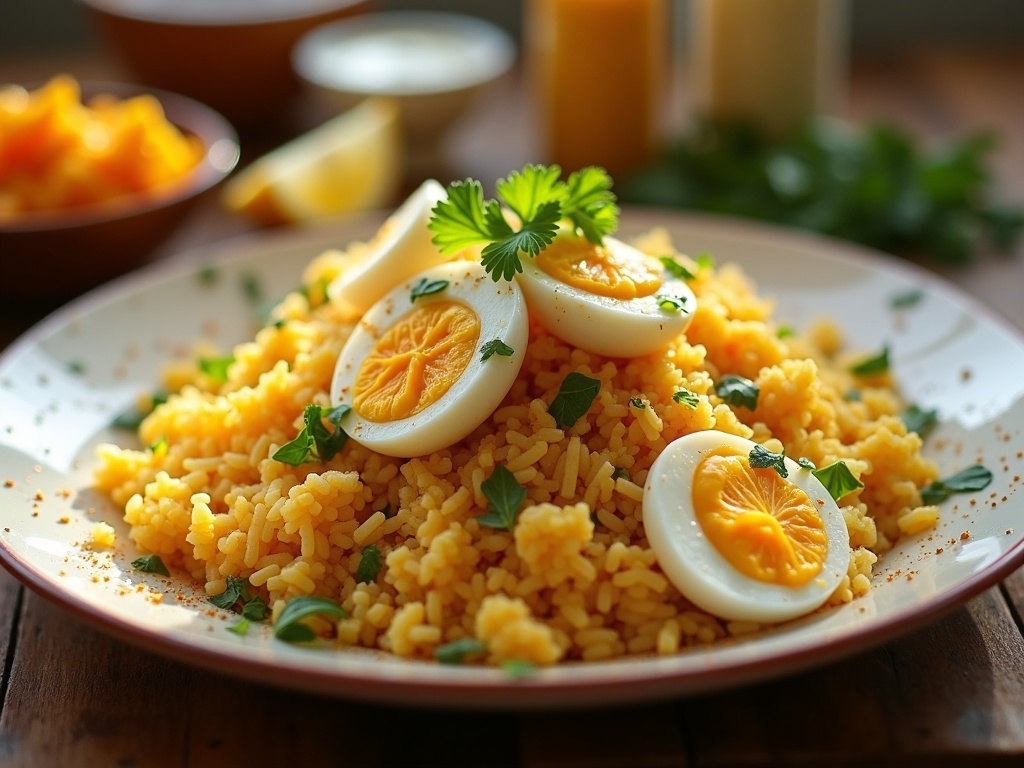
Sources:
Culinary History Journal: The History of Kedgeree: From Colonial India to British Breakfast
Market Research Report: Consumer Trends in Breakfast Foods 2021
Food & Nutrition Magazine: Nutrition Facts and Health Benefits of Kedgeree
Global Cuisine Studies: Culinary Fusions: Exploring Cross-Cultural Dishes

